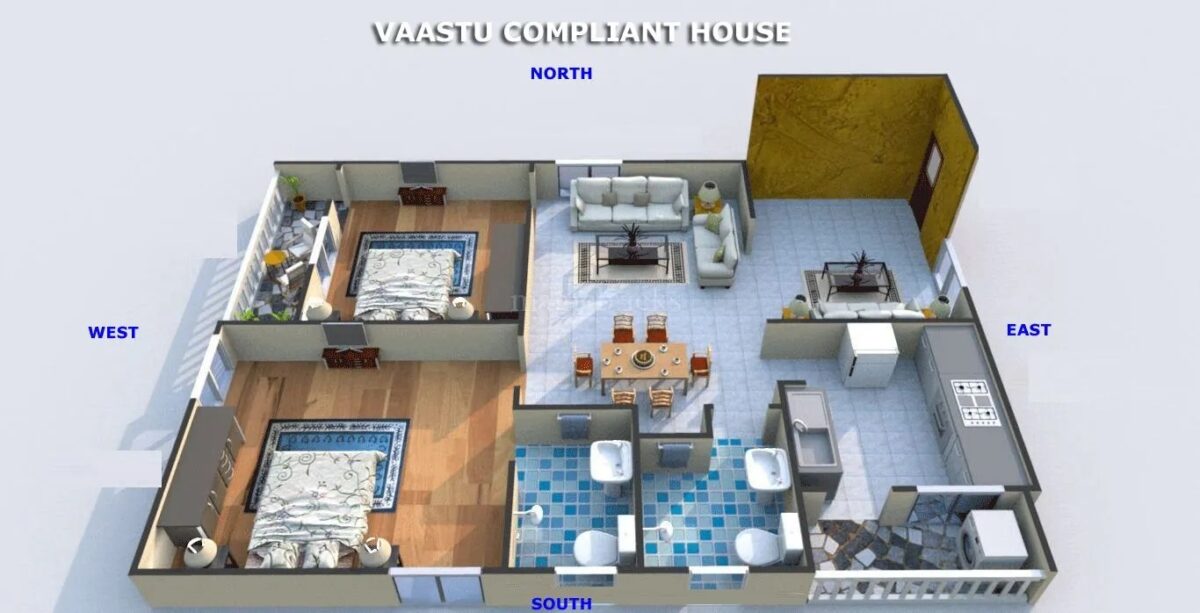
Vastu is an old architectural concept utilised in interior design that uses spatial geometry and direction to create a harmonious space that balances the five basic elements of Vastu: earth, fire, water, air, and space. Vastu has emerged as a key concept in interior design. It entails arranging furniture, windows, doors, and other elements in accordance with ancient principles, which encourages good vibes and overall wellness. Modern homes can learn a lot from the old wisdom about how to blend environmental harmony and utility. Now the question arises, what is Vastu? Why is it in demand in interior design? Let’s explore the facts with the definition of ancient perspectives.
The vastu sastra originated from the Sthapatya Veda. According to the section of the Atharva Veda, it deals with architecture and construction. The philosophy behind this is that every home should be built with harmony, which will be associated with cosmos, nature and the five elements (space, fire, water, air, and earth). According to the myth, this prevents the negative energy and boosts positivity in the environment.
Moreover, the Vastu Purush Mandala is the oldest concept of layout in Vastu sashtra, in which we can see a man lying within a square grid with his head, arms, and legs aligned to the cardinal directions. This is the layout that is used during interior design. Vastu’s history stretches back to the Vedic era, where it was revered as a science that linked architecture and the cosmos. It developed into a systematic system over the ages, impacting not only shrines but also houses and towns. Vastu was only used in the construction of temples or other religious structures during this time period. Following India’s independence, the current generation of Indians began to value it and built their homes using traditional Vastu expertise.
Vastu grew from Vedic cosmology into a sophisticated architectural philosophy that influenced India’s structures of worship, cities and residences. Although its popularity has changed over the centuries, it continues to influence design today, fusing spirituality with everyday life.
There are two main principles of Vastu Shashtra, such as,
Therefore, this is the ancient belief that the five natural elements of nature—earth, fire, water, air, and space —bring peace, spirituality, and harmony to life. These five elements symbolise many signs such as,
Vastu is very specific when relating certain energies to cardinal directions. Each direction has its importance.
The key component of interior design is vatu. A proficient interior designer should also understand every facet and tenet of Vastu sashtra. Institutions and universities that offer interior design courses now contain a whole chapter on Vastu. Given that contemporary generations want modern homes that incorporate classic elements, this is essential. NIF Global Kolkata offers a thorough interior design course in Kolkata. Their curriculum now includes a thorough explanation of the Vastu idea. We may rank NIF Global Saltlake as the top interior design institution in Kolkata to a certain degree.
Moreover, Vastu Shastra in interior designing is not just traditionalism—it is about creating an environment in which function coexists with balance. By following the guidelines of energy flow, natural light, and balanced Vastu, one assures that each nook and cranny in a person’s home or workspace contributes positively to their well-being, health, and productivity. In today’s modern environment filled with stress and imbalance, the variety of designs grounded in principles of Vastu may allow people to reconnect with nature and live in spaces that not only look great but also inspire positively.